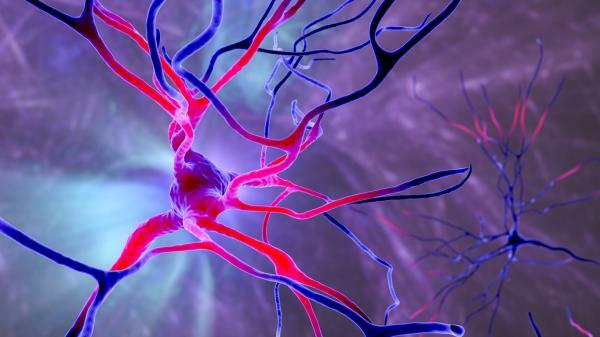
The number thirteen is, in our culture, the number associated with bad luck. This bad luck has been commonly associated with dates and even more so when the thirteenth is associated with Tuesday and / or Friday. The fact that you have to take an exam or similar test these days already makes you able to experiment certain insecurity, since these are days when everyone, by popular knowledge, “has bad lucky".
These culturally inherited beliefs can be taken very seriously by some people. These types of people, popularly called superstitious, can have a hard time on dates related to the number thirteen or in situations that have to do with this number. In this Psychology-Online article we talk about this type of fear called Triscaidecaphobia: what is it, symptoms, causes and treatment.
Index
- What is triscaidecaphobia
- Symptoms of triscaidecaphobia
- Causes of triscaidecaphobia
- Treatment of triscaidecaphobia
What is triscaidecaphobia.
Fear is an emotion that, as such, has contributed to the survival of the human being throughout its evolution and to the survival of each individual in particular. Fear keeps us safe from the dangers that we may encounter.
A specific phobia It consists of the experimentation of an exaggerated and irrational fear of some situation, object, animal, etc. Phobic stimuli are well defined and very specific. These stimuli do not pose a real danger, at least they are less dangerous than what the patient assumes.
Triscaidecaphobia is the term by which we refer to irrational and excessive fear of the number thirteen. Although specific phobias have been extensively investigated, triscaidecaphobia as such has not received much scientific attention. In fact, if it is considered a specific phobia, it would not be very common among the population.
Is the number thirteen or has it ever been a real danger? Objectively not. However, the phobic stimulus does not have a precise definition in this case, what is the person really afraid of? See the number thirteen written? Think about him? A set of thirteen elements? The dates that contain the number thirteen? The lack of definition of the feared stimulus makes it more difficult to define.
On the other hand, the fear of the number thirteen, in a popular way, is considered a superstition. People, for sociocultural reasons, attribute a negative meaning to the number thirteen related to bad luck, lacking this belief from scientific evidence.
Symptoms of triscaidecaphobia.
Considering triscaidecaphobia as a specific phobia, the person suffering from it would present cognitive, physiological and behavioral symptoms before the appearance of the dreaded stimulus.
Cognitive symptoms
A person with triscaidecaphobia may have irrational beliefs regarding the number thirteen. For example, you may think that during dates that contain the number thirteen, the chances of some misfortune or negative event occurring is higher. Discomfort can also be present when the person anticipates the possible negative events that can take place on these dates.
Behavioral symptoms
The person will avoid phobic stimuli or will resist them enduring great discomfort. However, we will not always be able to avoid these stimuli.
Some examples in which we can avoid the number thirteen is in the cases in which we can manipulate a set of elements that add up to thirteen: for example we can avoid eating thirteen grapes, eating one more or one less.
However, there are many occasions when we cannot avoid the "unlucky number", such as it happens with dates: we can't help but live on the thirteenth of every month or even go through the age of thirteen years. Therefore, in these cases the person must face the discomfort generated by her superstition.
Physiological symptoms
Physiological symptoms of phobias include tachycardia, bradycardia, nausea, sweating, etc.. that appear when the phobic stimulus is present or anticipated.
Here you will find more information about Fears and phobias.
Causes of triscaidecaphobia.
To explain the causes of specific phobias, different theories have been proposed, such as biological, cognitive-behavioral and integrative theories. The latter take into account biological, cognitive and social factors in their explanation and we will deal with the first two below.
Biological theories
These theories assume an evolutionary and genetic predisposition to the development of phobias. However, it is difficult to think that fear and / or rejection of the number thirteen as such has contributed to the survival of the species or individuals.
Cognitive-behavioral theory
The explanation that we can offer from this approach would establish the origin by associating the number thirteen with aversive stimuli and would be maintained when avoiding stimuli related to the number thirteen.
Vicarious conditioning
On the other hand, vicarious conditioning, which would explain the acquisition of fear through observing such fear in other people, It would be a theory more adjusted to the case of triscaidecaphobia.
As we have pointed out previously, superstition consists of a sociocultural phenomenon through from which we grant a value, some properties or a meaning that has no foundation scientific. This "knowledge" is passed down through the generations, which may fit the theory of vicarious conditioning.
Therefore, intergenerational transmission would play a determining role in the appearance of this fear.
In the following article, you can see more information about the vicarious learning.
Treatment of triscaidecaphobia.
Undoubtedly, in the treatment for specific phobias, the exposure techniques, which consist of expose the person to the stimulus feared for a long time.
Now let's think about the stimuli that we mentioned earlier and that we cannot avoid. These stimuli, especially related to dates, are present from the beginning of our lives. As we learn the culturally negative connotations of the number thirteen, we are exposing ourselves to it. This fact, therefore, would complicate the development of triscaidecaphobia. In this article, you will find more information about the exposition technique in psychology.
Finally, the cognitive therapy It could also be of great help in this type of case, so that irrational beliefs related to the number thirteen that have been detected in the evaluation of the case are addressed.
This article is merely informative, in Psychology-Online we do not have the power to make a diagnosis or recommend a treatment. We invite you to go to a psychologist to treat your particular case.
If you want to read more articles similar to Triscaidecaphobia: what is it, symptoms, causes and treatment, we recommend that you enter our category of Clinical psychology.
Bibliography
- American Psychiatric Association (2014). DSM-5. Reference guide to the diagnostic criteria of the DSM-5-Breviary. Madrid: Editorial Médica Panamericana.
- Sosa, C.D. and Capafóns, J.I. (2014) Specific phobia. In Caballo, V.E., Salazar, I.C. And Carrobles, J.A. (2014) Manual of Psychopathology and Psychological Disorders. Madrid. Pyramid.
- World Health Organization (WHO) (2018) International Classification of Diseases, 11th revision. Recovered from https://icd.who.int/es
Triscaidecaphobia: what is it, symptoms, causes and treatment


